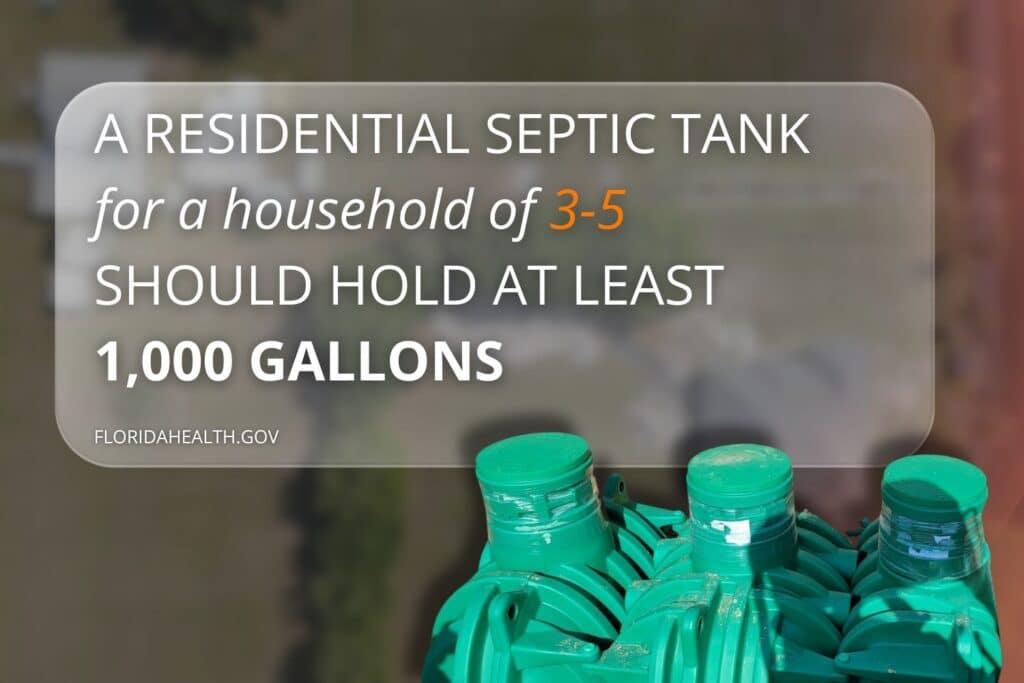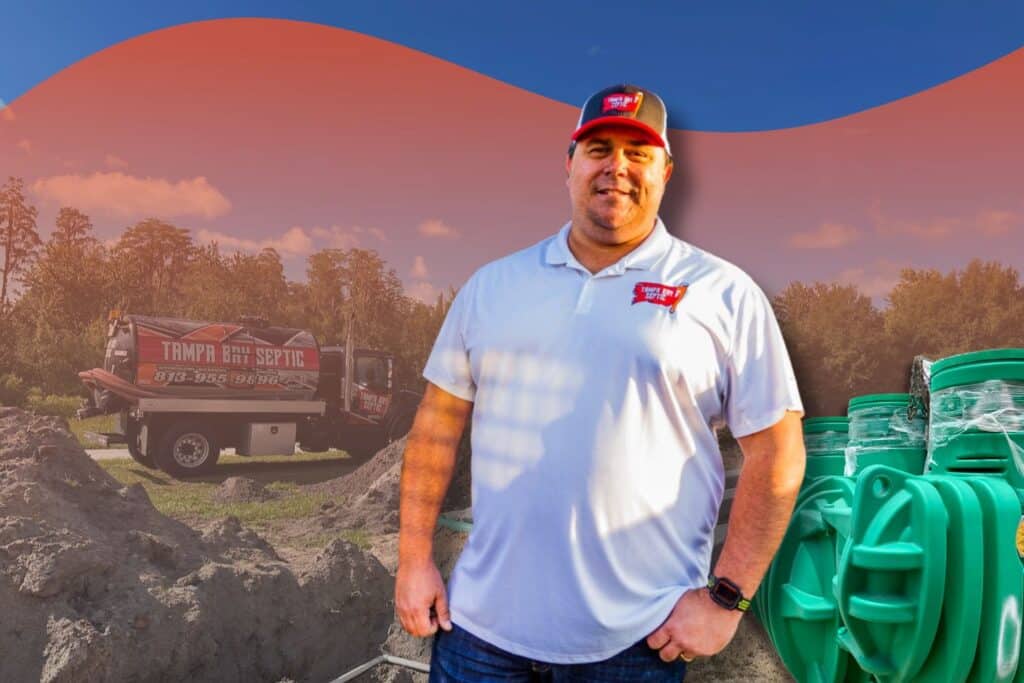If you rely on a septic system, the design of the tank plays a major role in how well it performs. From tank size to drainfield layout, the way your system is built affects how efficiently it handles waste, how often it needs maintenance, and how long it lasts before issues start to show.
In Florida, where soil types, seasonal storms, and high water tables can add pressure to any septic setup, smart design matters even more. Here’s how your septic tank’s design directly affects how it runs, and how to avoid problems that cost time and money.
What Goes Into Septic Tank Design?
Septic tank design is more than just picking a tank and putting it in the ground. It’s a full system built to manage waste, filter it, and safely release treated water back into the ground.
Key elements include:
-
Tank size
-
Material (concrete, plastic, fiberglass)
-
Inlet and outlet baffles
-
Drainfield size and layout
-
Soil absorption rate
-
Depth of installation
-
Access points for service and pumping
Each of these factors influences how well the system manages wastewater. If the design doesn’t match the size of your household or the conditions of your property, performance can suffer quickly.

Tank Size and Wastewater Volume
One of the most important design decisions is tank size. A septic tank that is too small for the number of people using it will fill up too fast, leading to frequent backups and strain on the drainfield.
In Florida, this is especially important in homes that may have in-law suites, rental units, or seasonal guests. Even a weekend of heavy use can stress an undersized system.
A well-designed system accounts for:
-
Number of bedrooms
-
Average water usage
-
Household growth over time
-
Laundry and dishwasher output
Drainfield Design and Soil Conditions
The drainfield is where filtered wastewater is released into the soil for final treatment. But not every soil absorbs water the same way. In parts of Florida, sandy soil drains quickly, while clay-heavy or high-moisture areas may need a larger or deeper drainfield to avoid pooling or surfacing.
The layout and slope of your drainfield directly affect how wastewater is distributed. Poor design can lead to:
-
Slow drainage and pooling
-
Foul smells in the yard
-
Wet spots or standing water after rain
-
Premature drainfield failure
Designing the drainfield with the right size, depth, and layout helps prevent overloading and keeps the system efficient for years.
Tank Material and Long-Term Durability
Septic tanks are typically made of concrete, fiberglass, or plastic. Each comes with pros and cons depending on your property.
-
Concrete tanks are durable but can crack over time if not installed on stable ground.
-
Plastic tanks are lighter and easier to install, but may shift in high water table areas.
-
Fiberglass tanks resist corrosion and shifting, but can be more expensive up front.
In coastal and flood-prone areas around Tampa Bay, material selection should take into account soil movement, water table depth, and storm resilience. A tank that shifts or cracks due to poor placement or material choice can lead to major repairs.
Importance of Proper Baffles and Access
Inlet and outlet baffles help keep solids inside the tank and prevent clogs in the drainfield. If these are poorly installed or missing, the system may function for a while but eventually fail as solids push through to the field.
Well-designed systems also include access risers and inspection ports. These features allow for easier pumping, cleaning, and monitoring. Without them, routine service becomes more expensive and time-consuming.
Common Problems Caused by Poor Design
Even a new septic system can underperform if the design wasn’t tailored to the property. Some common signs of poor design include:
-
Slow drains throughout the house
-
Gurgling toilets or plumbing noises
-
Backups after heavy use
-
Odors around the tank or yard
-
Frequent pumping needs
-
Wet or sunken areas over the drainfield
These issues often signal that the tank is too small, the drainfield is overloaded, or the soil is not absorbing water properly. In many cases, redesign or replacement is the only long-term fix.

The Value of a Well-Designed System
When septic tank design is done right, the system runs quietly and efficiently in the background. A well-designed system should:
-
Handle normal household waste without backups
-
Reduce the need for emergency pumping
-
Protect groundwater and property value
-
Last 20 to 30 years or more with routine care
That long-term performance starts with smart planning. Even if your system is already installed, an evaluation can determine whether the design is supporting its function—or holding it back.
When to Call a Professional
If you’re buying property, planning renovations, or experiencing recurring septic issues, it’s worth having a professional inspect your system design.
Tampa Bay Septic can evaluate whether your current setup matches your usage and environment. We check tank size, placement, material, drainfield function, and more to make sure your system is built to last.
Upgrading the design doesn’t always mean starting over. In many cases, targeted improvements like drainfield expansion or tank replacement can extend the life of your system and prevent future issues.
Conclusion
Septic systems are more than tanks in the ground. Their design directly affects how well they perform, how often they need attention, and how long they last. From soil absorption to household use, every detail matters.
Whether you’re maintaining an older system or planning for a new one, understanding septic tank design helps you make better choices and avoid costly surprises.
